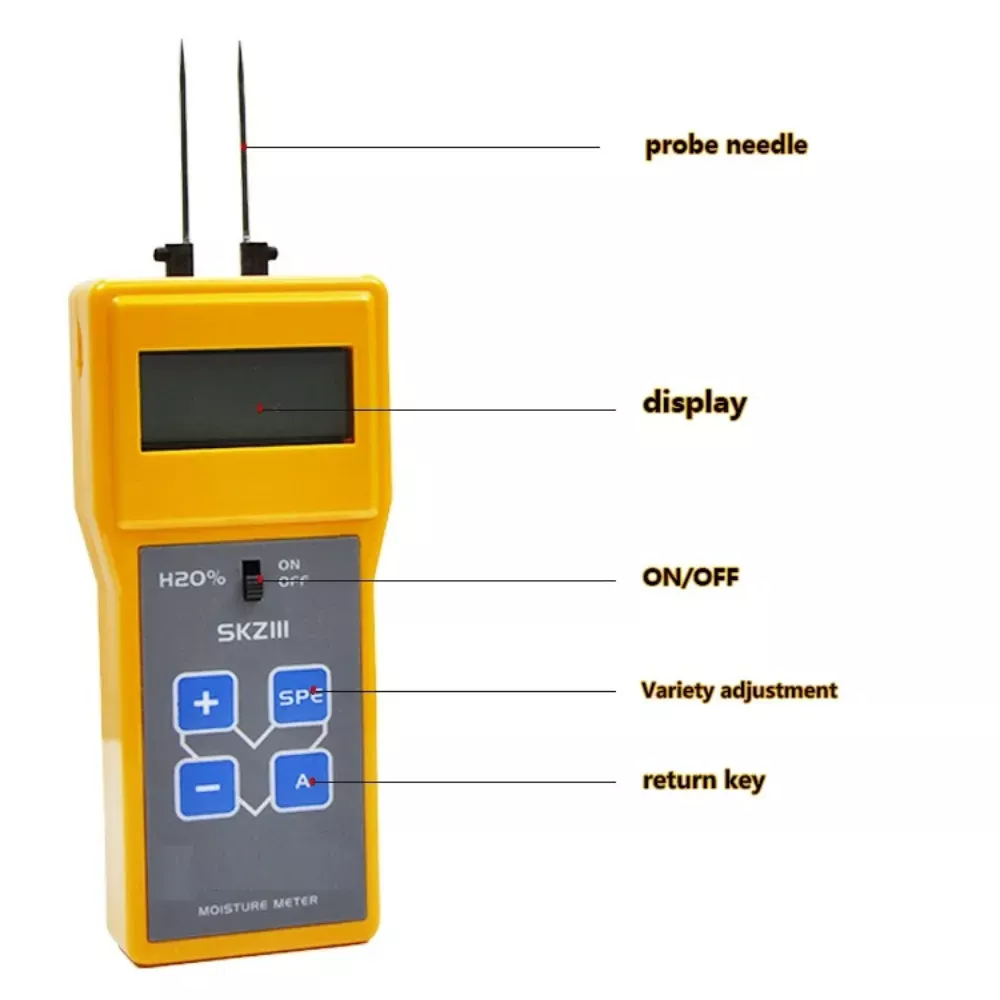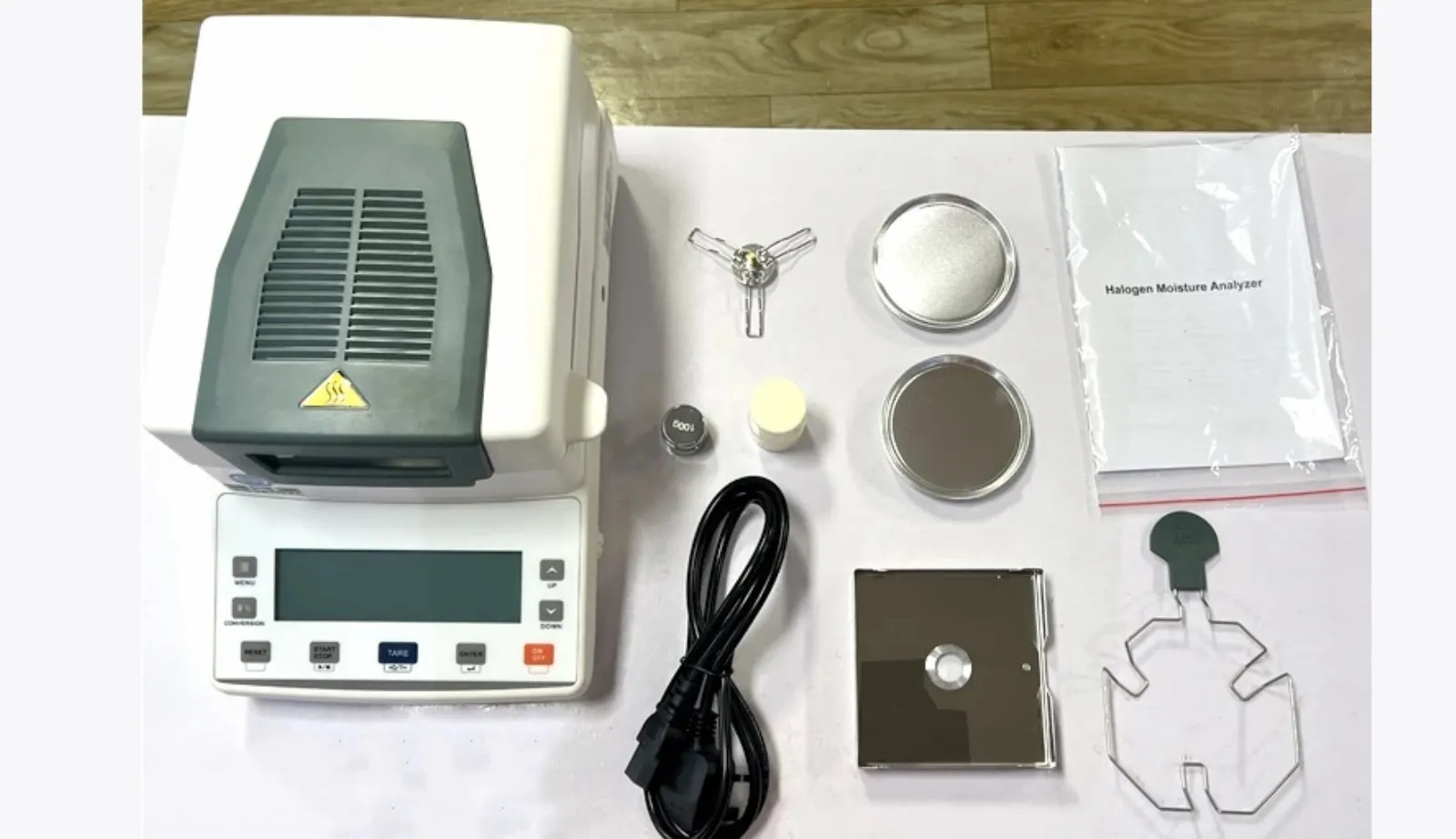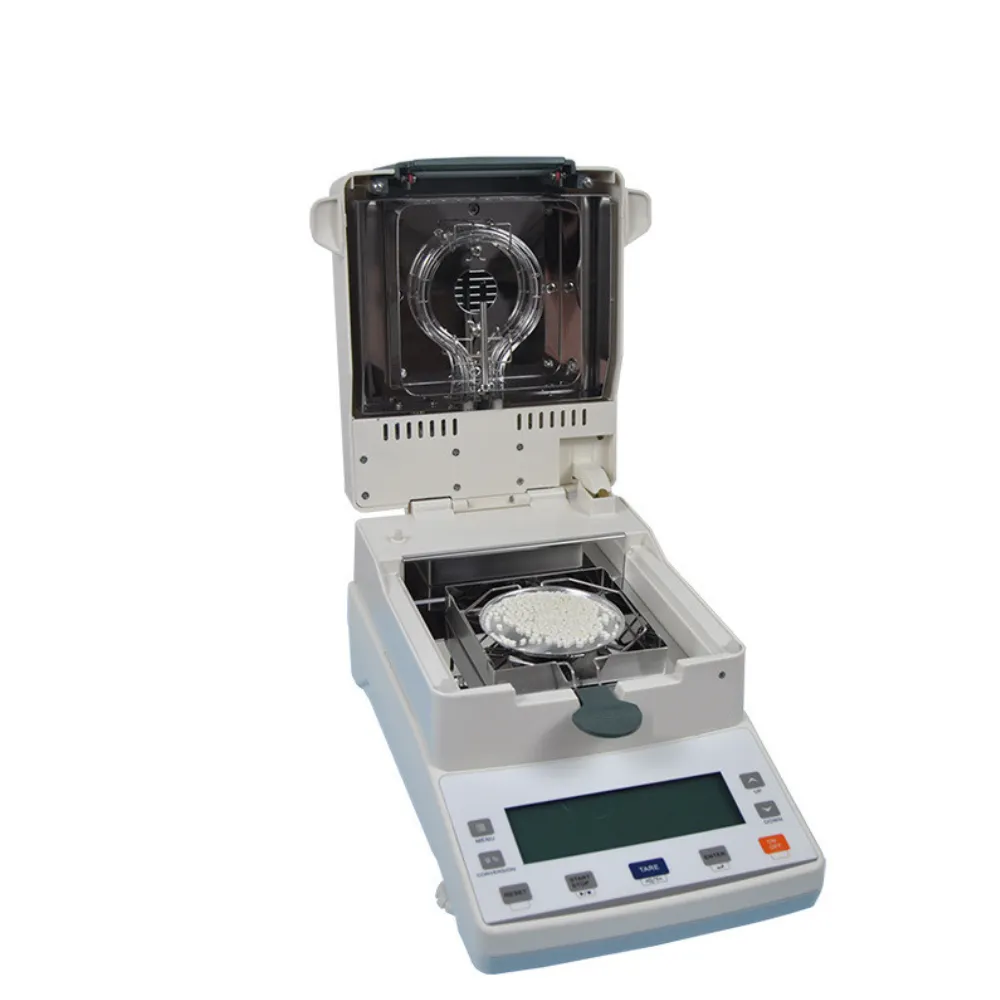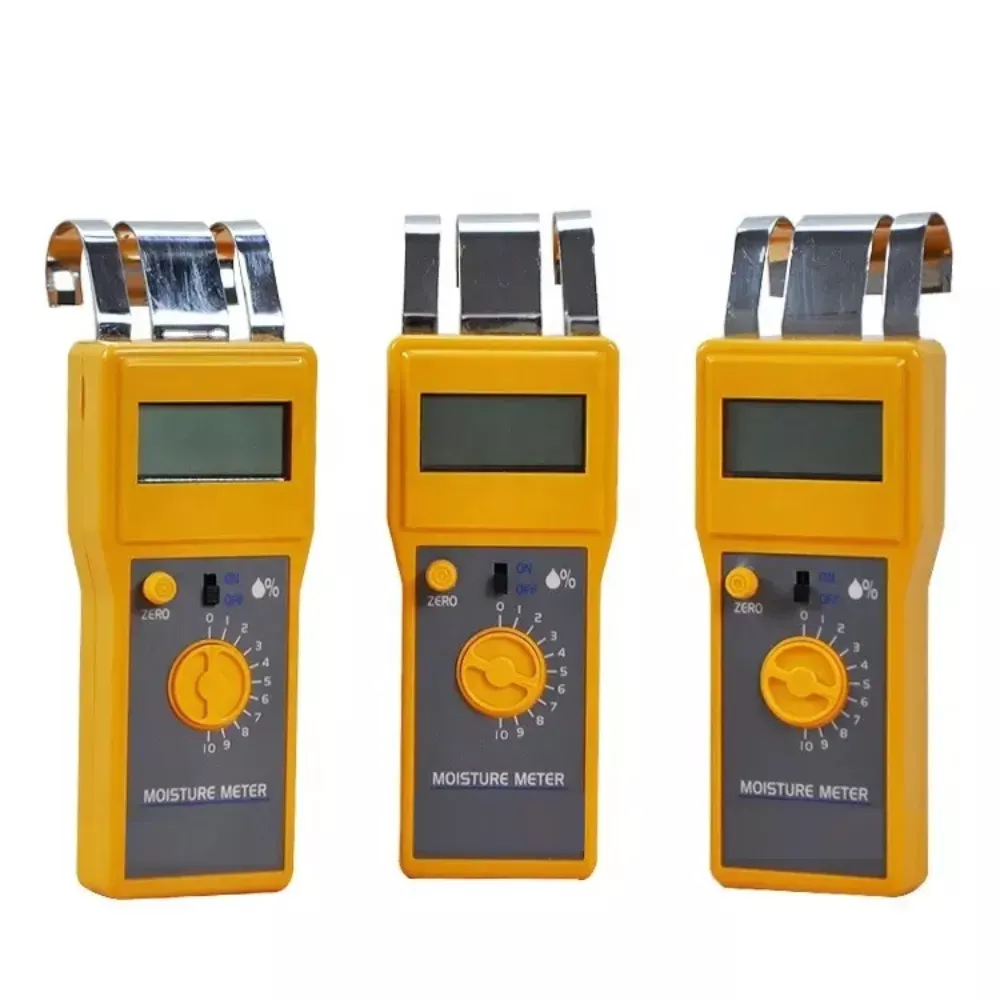
The Principles Behind Halogen Moisture Analyzers
Table of Contents
Thermogravimetric Measurement: The Core Principle
Halogen moisture analyzers operate on the principle of thermogravimetric measurement. This process involves heating a sample with an infrared radiator (typically a halogen lamp) and continuously recording the weight loss until drying is complete. The analyzer automatically calculates moisture content from the difference in weight before and after heating. This method is renowned for its speed and accuracy in determining moisture content across various sample types.

Advanced Heating Mechanism
The heating mechanism in halogen moisture analyzers utilizes halogen bulbs designed with a tungsten filament encased in a small envelope filled with halogen gas. This design allows the bulbs to operate at high temperatures, enabling quick and efficient sample heating. The halogen cycle within the bulb maintains the filament’s integrity by capturing and redepositing atoms driven off by heat. This mechanism ensures consistent and prolonged operation, making it ideal for repetitive and high-precision measurements.
Precise Temperature Regulation
A critical performance factor of these analyzers is their precise and fast temperature regulation. This is attributed to the low mass and rapid reaction time of halogen lamps. The efficient heat management and rapid response significantly reduce the drying process time while ensuring repeatable results from the first measurement. Even heat distribution on the sample surface is maintained throughout the process, contributing to the accuracy of the moisture content determination.

Calibration for Accuracy
Regular calibration is crucial for maintaining the accuracy of halogen moisture analyzers. This process involves using certified standards with known moisture content that match the sample characteristics. Calibration routines typically require placing the standard in the sample chamber and following manufacturer instructions, allowing the analyzer to adjust its internal calibration automatically. For reliable and accurate measurements, it’s recommended to calibrate at least once a day or before each batch of samples.
Practical Considerations for Optimal Performance
To achieve quick and precise measurements, proper installation and operation are essential. Users should ensure the analyzer is clean and well-maintained according to manufacturer guidelines. Implementing user management systems to track calibration schedules and protocol adherence helps maintain the instrument’s accuracy and reliability over time. These practical considerations are crucial for maximizing the efficiency and effectiveness of halogen moisture analyzers in various applications.
Comments
Tags
Frequently Asked Question
They heat a sample and continuously record weight loss until drying is complete, calculating moisture content from the difference in weight before and after heating.
Halogen lamps offer high operating temperatures, quick and efficient heating, and precise temperature regulation due to their low mass and rapid reaction time.
It’s recommended to calibrate at least once a day or before each batch of samples to maintain reliable and accurate measurements.
Proper installation, regular cleaning and maintenance, and implementing user management systems for calibration tracking are essential for optimal performance.


